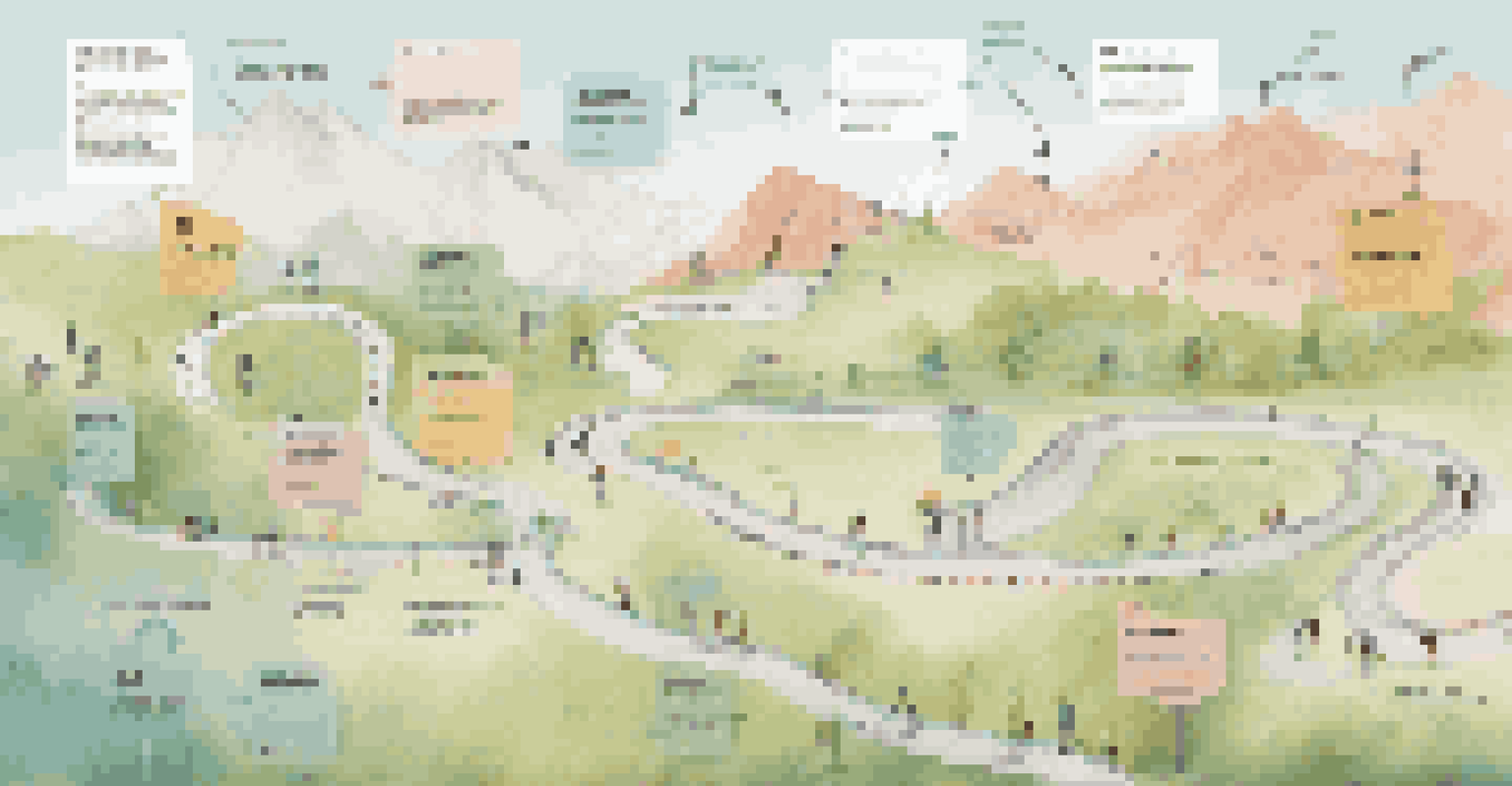Creating a User-Centric Roadmap for Software Development

Understanding the Importance of User-Centric Design
User-centric design is the backbone of any successful software project. It emphasizes the importance of understanding users' needs, preferences, and behaviors. By putting users at the forefront of development, teams can create products that truly resonate with their audience.
It is not the strongest of the species that survive, nor the most intelligent, but the one most responsive to change.
This approach not only enhances user satisfaction but also boosts engagement and retention rates. Think of it like cooking a meal; if you know your guests’ preferences, you’ll serve a dish they love. Similarly, understanding your users helps in crafting a product that meets their expectations.
Incorporating user feedback throughout the development process ensures that the final product is aligned with real-world needs. This ultimately leads to a smoother launch and a more successful product overall.
Defining Your Target User Personas
Creating detailed user personas is a crucial step in developing a user-centric roadmap. These personas represent different segments of your user base, helping you visualize who you're designing for. Each persona should include demographics, behaviors, and pain points, making it easier to tailor your product accordingly.

For instance, if you're developing a fitness app, you might create personas like 'Busy Professional' and 'Fitness Enthusiast.' By understanding their unique needs, you can prioritize features that appeal to each group, ensuring a broader market reach.
User-Centric Design Boosts Success
Prioritizing user needs in design leads to enhanced satisfaction, engagement, and retention.
Regularly revisiting and updating these personas based on user feedback keeps your product relevant. As trends and user preferences change, so should your understanding of who your users are.
Conducting User Research to Inform Development
User research is the compass guiding your software development journey. This could involve surveys, interviews, or usability testing to gather insights directly from your users. The data collected helps identify key features and functionalities that truly matter to your audience.
The customer’s perception is your reality.
For example, if users express frustration with navigation in an existing app, you can prioritize a more intuitive design in your roadmap. This not only addresses immediate concerns but also strengthens user trust and loyalty.
Incorporating research findings into your development plan ensures that choices are data-driven rather than assumptions. This leads to a more informed and targeted approach that resonates with users.
Mapping Out the User Journey
The user journey map is a visual representation of the steps users take when interacting with your software. It highlights their emotions, expectations, and touchpoints, providing insight into their overall experience. By mapping this journey, you can identify pain points and opportunities for enhancement.
Imagine planning a road trip; you wouldn't just focus on the destination but also the route, stops, and potential roadblocks. Similarly, understanding the user journey helps in creating a smoother experience from start to finish.
User Personas Guide Development
Creating detailed user personas helps tailor products to meet specific user segments effectively.
With a clear view of the user journey, you can prioritize development tasks that will have the greatest impact on user satisfaction. This targeted approach keeps the user at the heart of your roadmap.
Prioritizing Features Based on User Needs
Once you have a clear understanding of your users and their journey, it's time to prioritize features. Consider using frameworks like the MoSCoW method, which categorizes features into Must-haves, Should-haves, Could-haves, and Won't-haves. This helps in making informed decisions about what to develop first.
For example, if your user research indicates that a certain feature is crucial for achieving user goals, it should be prioritized higher on your roadmap. This ensures that you’re delivering value where it matters most.
Regularly revisiting these priorities as new feedback comes in keeps your development agile and responsive to user needs. This flexibility is key to maintaining a user-centric approach.
Iterating Based on User Feedback
Software development doesn’t stop after the initial launch; it's an ongoing process of improvement. Collecting user feedback post-launch is vital for identifying areas for enhancement. This feedback loop helps you understand how users are interacting with your product and where adjustments are needed.
Think of it as tuning a musical instrument; it requires regular adjustments to maintain harmony. By iterating based on user feedback, you ensure that your software evolves with its users.
Feedback Drives Continuous Improvement
Iterating based on user feedback ensures that software evolves to better meet user expectations.
Incorporating updates and new features based on user suggestions not only improves the product but also fosters a sense of community. Users feel valued when their opinions are acknowledged and implemented.
Measuring Success with Key Performance Indicators (KPIs)
Establishing clear KPIs is essential for measuring the success of your user-centric roadmap. These metrics should align with your user goals and help assess how well your software meets their needs. Common KPIs include user satisfaction scores, retention rates, and feature adoption rates.
For instance, if your goal is to enhance user engagement, tracking the frequency of feature usage can provide valuable insights. This data can guide future development efforts and adjustments to the roadmap.

Regularly reviewing these KPIs allows you to celebrate successes and identify areas for further improvement. This ongoing analysis reinforces the importance of a user-centric approach in driving software development.